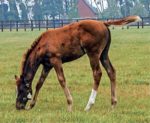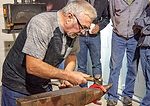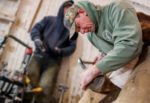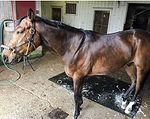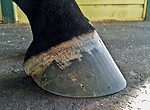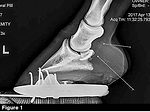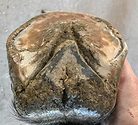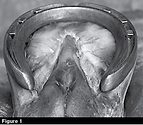Advertise Follow Us
American Farriers Journal
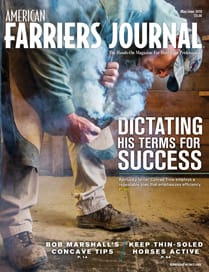
View Archived Issues
May/June 2019
Volume: 45
Edition: 4
American Farriers Journal is the “hands-on” magazine for professional farriers, equine veterinarians and horse care product and service buyers.
-
Table Of Contents
Table Of Contents
Strategies for Shoeing with Concave Stock
Hall of Fame farrier Bob Marshall shares proven forging tipsRead MoreShoeing For A LivingShoeing Performance Horses in Oldham County, Kentucky
Kentucky Farrier Conrad Trow credits his success to dictating how his practice should operate.Read MoreEvaluating for Trimming and Shoeing Plans
Hall of Fame farrier Grant Moon reviews the thought process that should result in a proper trimming and shoeing plan for the horses he works with.Read MoreBeware of Potential Post-operation Infections
Routine castration leads to a laminitic event in a Thoroughbred racehorseRead MoreEnter a New Era of Business Management
Use apps and software to put your farrier practice ahead of the times.Read MoreEvidence-based Farriery is Revolutionizing Hoof Care
Scientific study is measuring the effectiveness of anecdotal traditionsRead MoreThe Pros and Cons of Top Dressing the Foot
Farriers discuss the benefits, potential problems and valueRead MoreSport Horse Presents Tough, Unresolved Case
Presented with a horse not responding to hoof-care, farrier Stuart Muir tries different footcare strategies to achieve soundnessRead MorePractice is the Key to Forging Proficiency
Improving your chances in certification and horseshoeing competitions takes time and repetitionRead MoreStrategies to Manage Thin-Soled Horses
Thin soles can occur for a number of reasons, but a good management plan can help these horses remain active and comfortableRead MoreNew Tax Laws Hitting Supply Shops’ Bottom Lines
State-specific internet tax regulations are increasing competition, but costing more time and moneyRead MoreOvercome “Bad” Horses in Your Hoof-Care Practice
Gaining trust and nurturing your relationships with horses will make your job easierRead MoreChallenging Common Shoeing Beliefs
Scientific investigation on shoe placement and other topics of farriery continue to affect widely-held theoriesRead MoreResearch Journal: May/June 2019
The information, ideas and opinions expressed are those of the author and do not necessarily represent those of the United States Department of Agriculture.Read More -
Featured Articles
Featured Articles
Strategies for Shoeing with Concave Stock
Hall of Fame farrier Bob Marshall shares proven forging tipsRead MoreShoeing For A LivingShoeing Performance Horses in Oldham County, Kentucky
Kentucky Farrier Conrad Trow credits his success to dictating how his practice should operate.Read MoreEvaluating for Trimming and Shoeing Plans
Hall of Fame farrier Grant Moon reviews the thought process that should result in a proper trimming and shoeing plan for the horses he works with.Read More - Digital Edition
-
Online Extras
Online Extras

